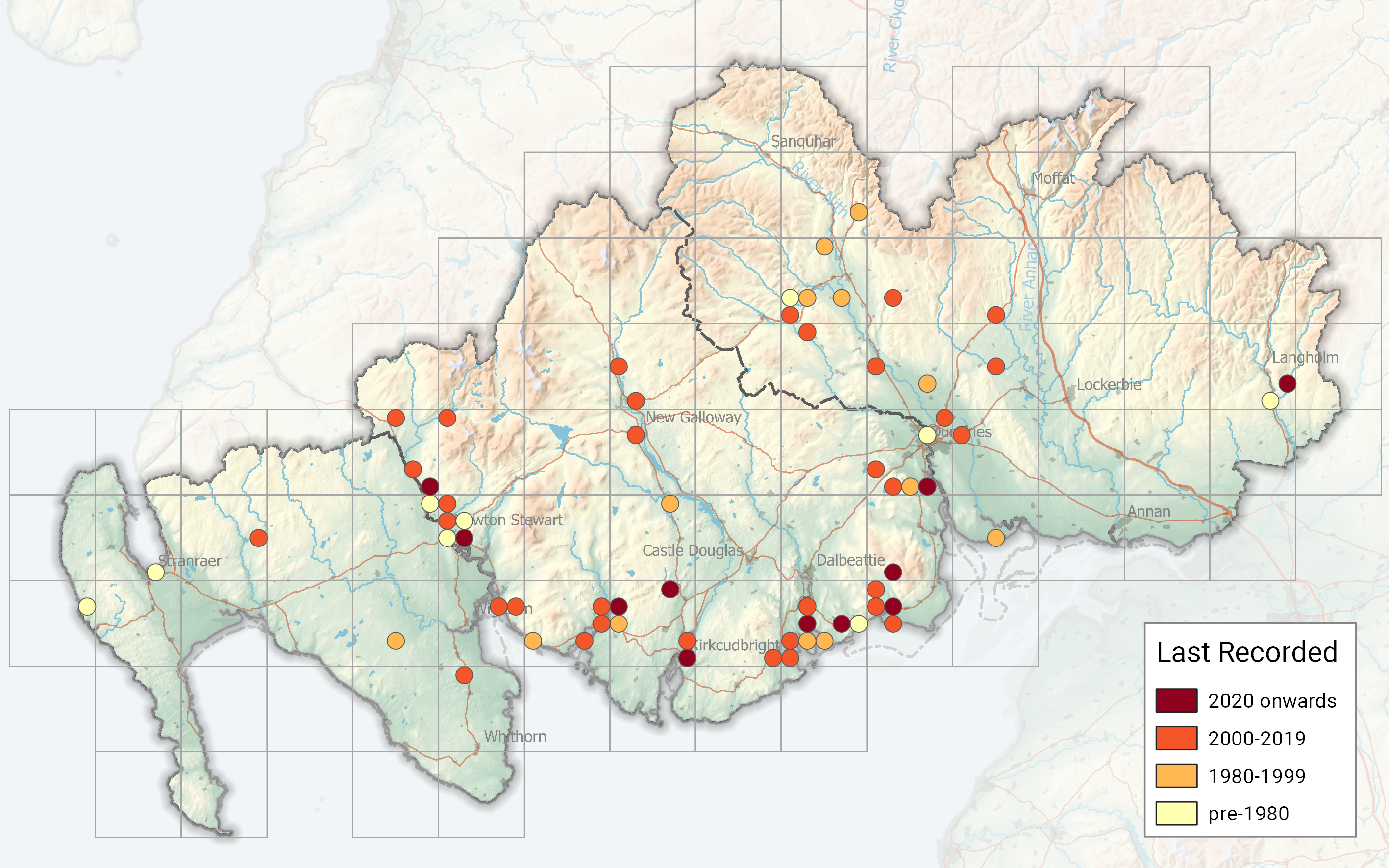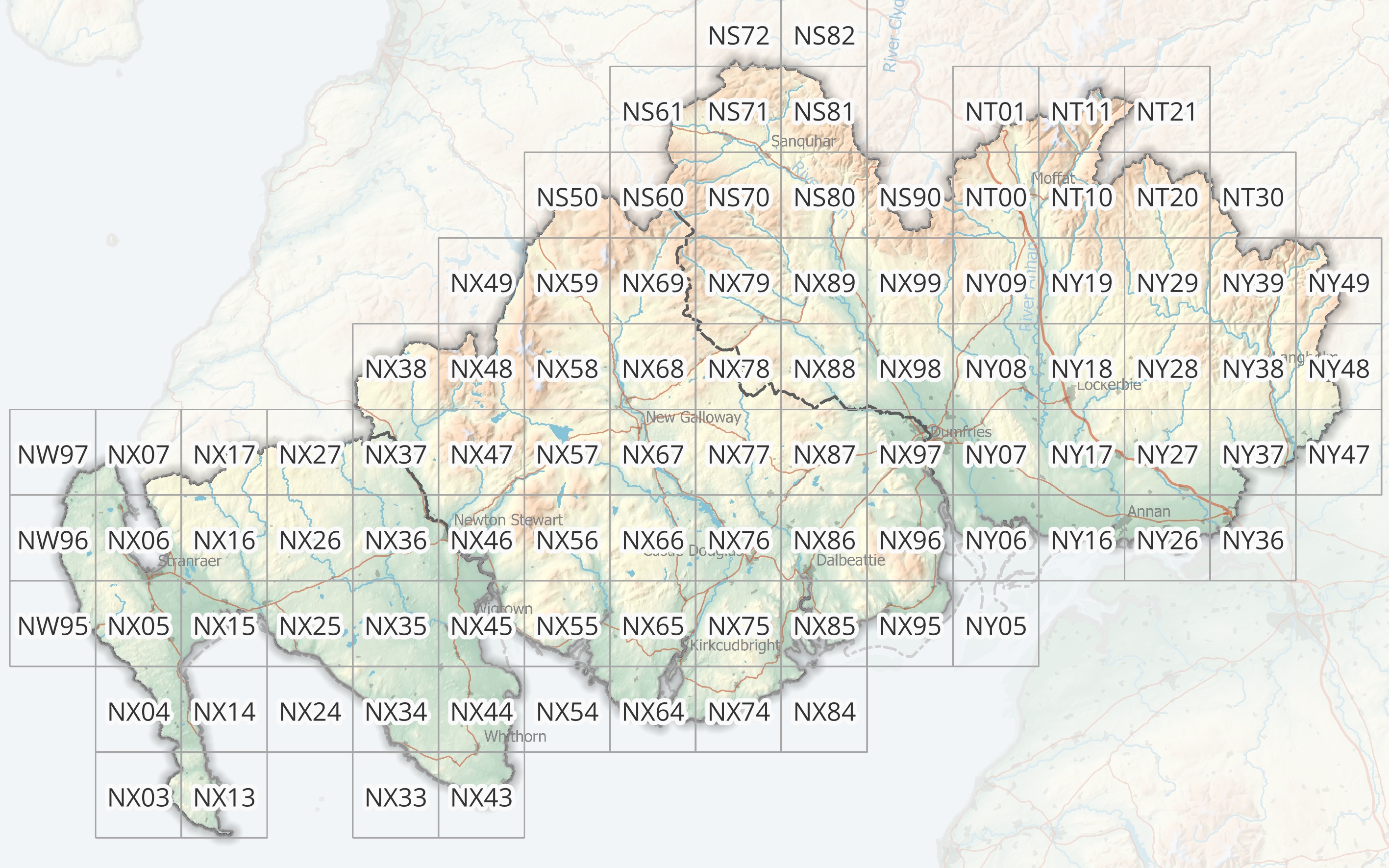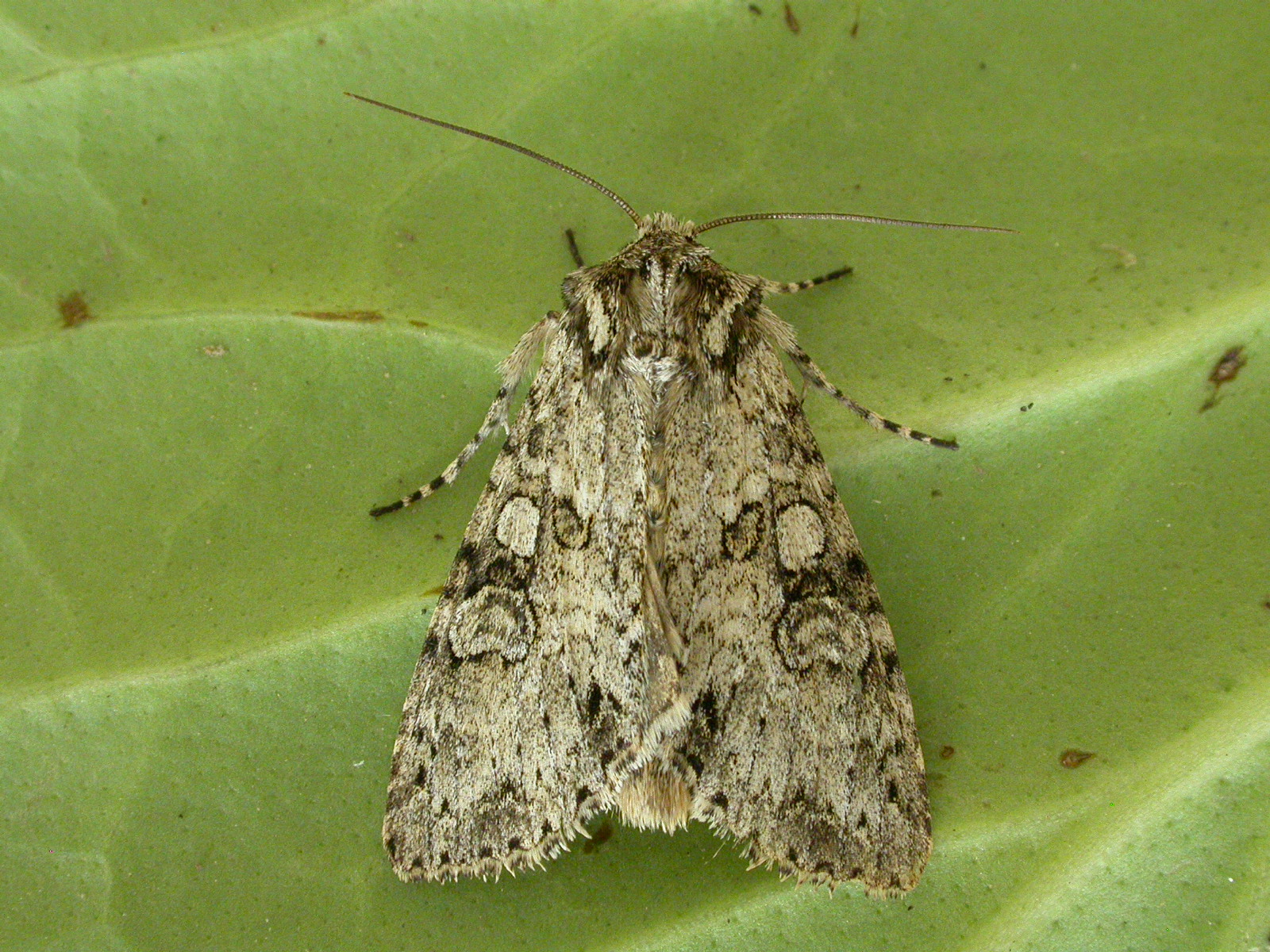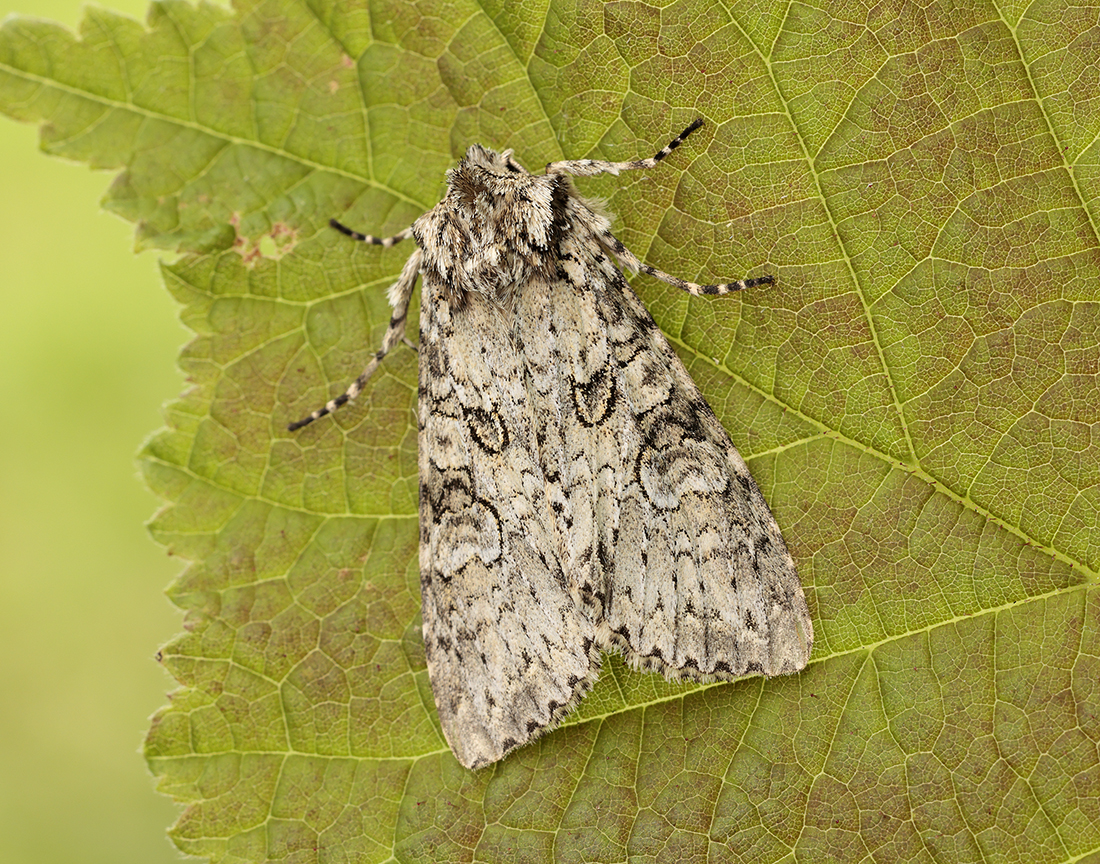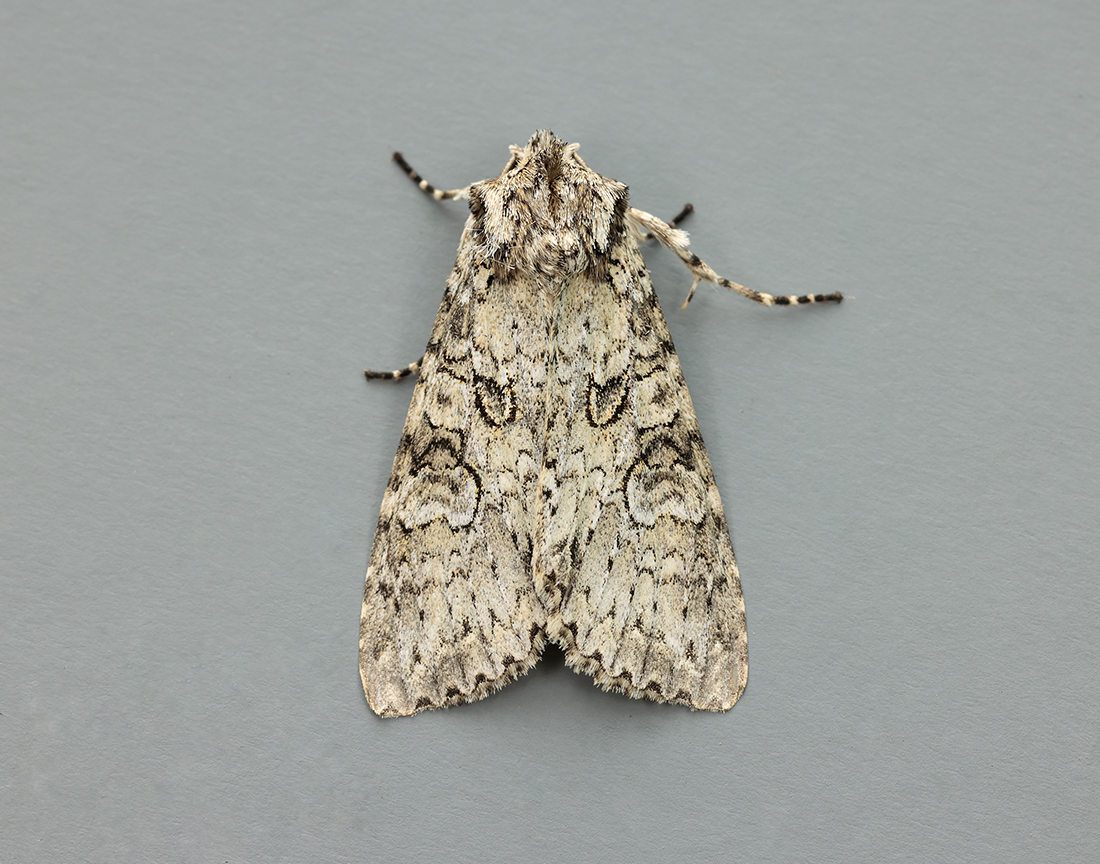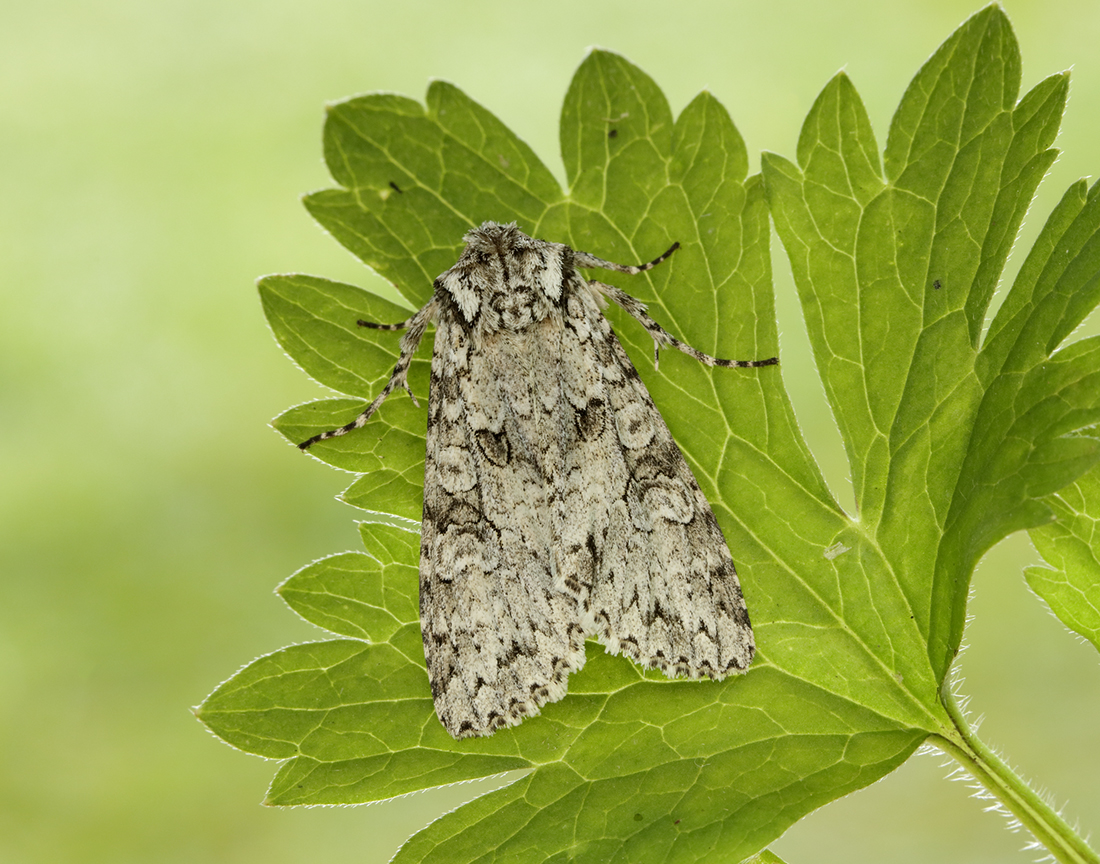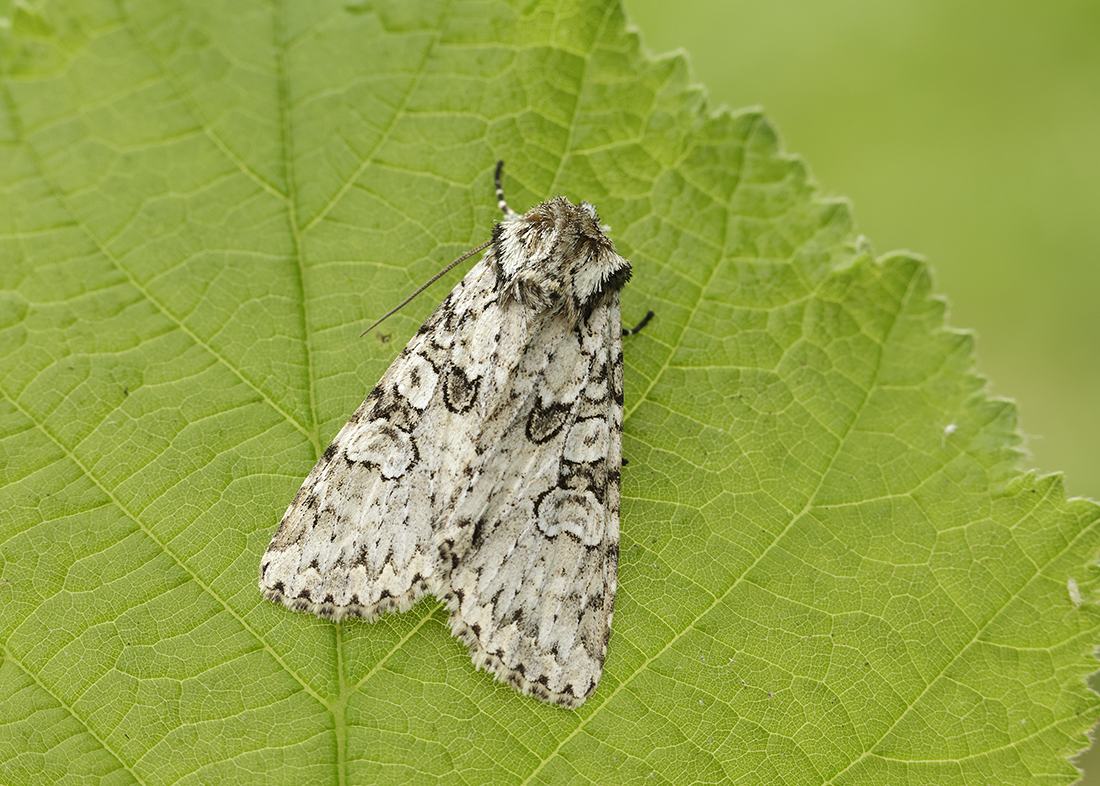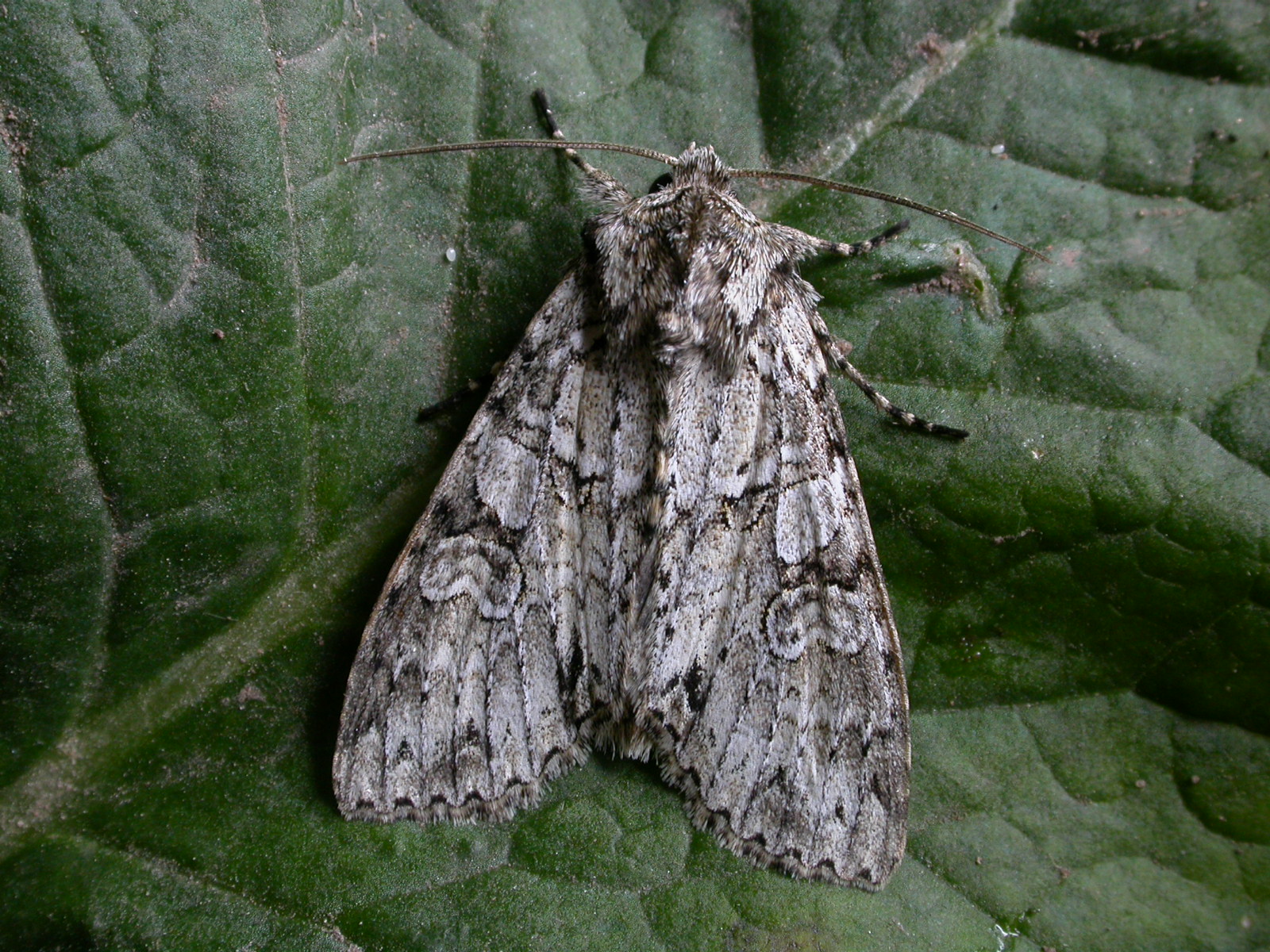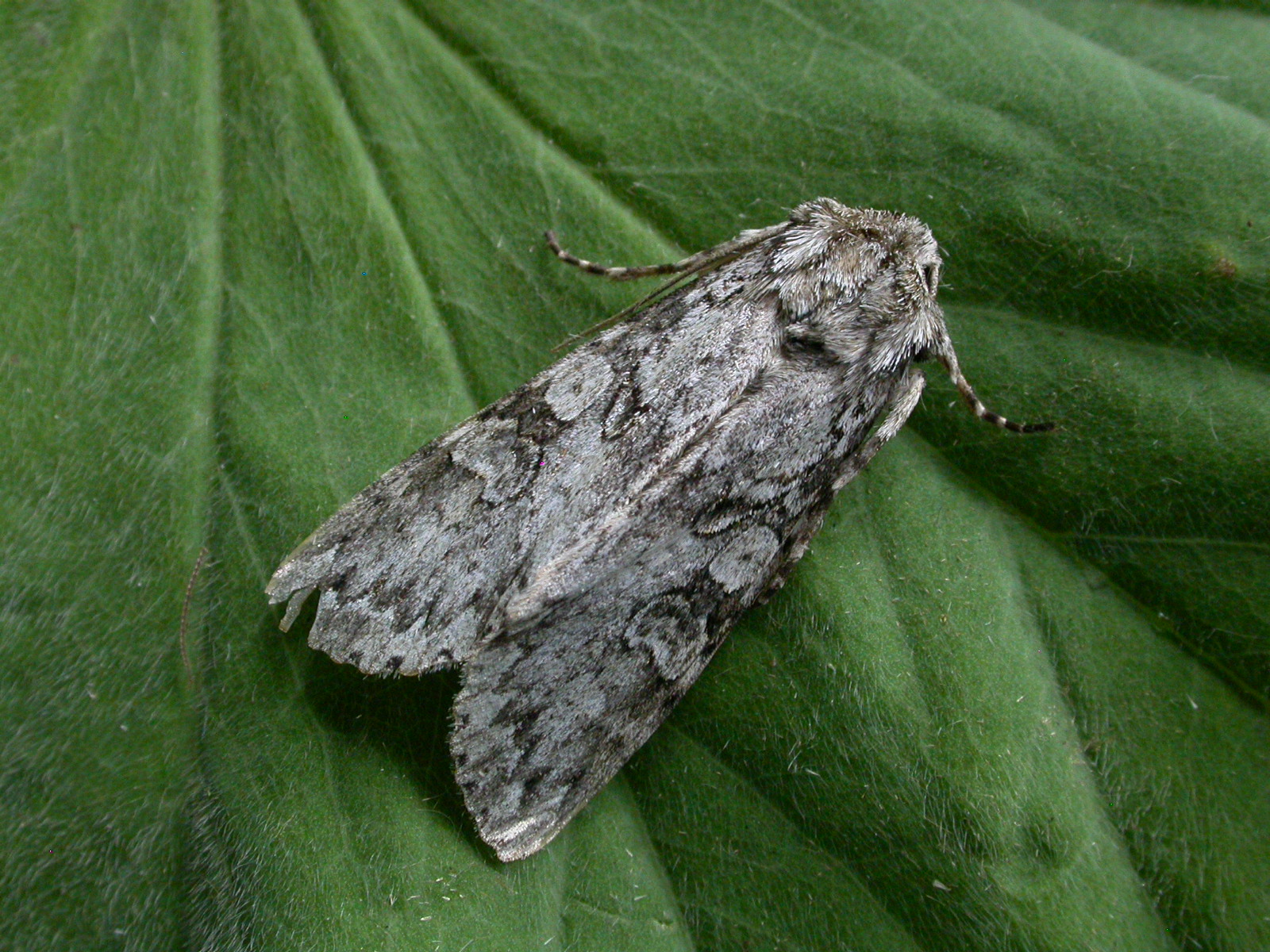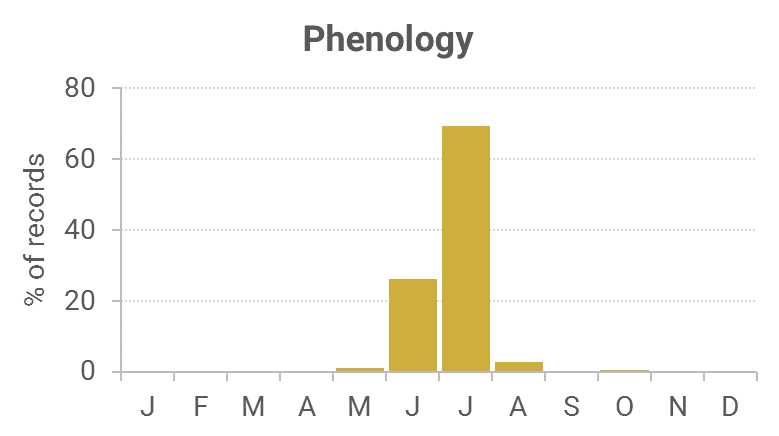Identification
The strongly curved greyish forewing with a dark dash or arrowmark in the trailing corner, pale kidney-mark and oval with dark outlines should aid identification.
Recording Method.
Attracted to light, also comes to sugar.
Life cycle
One generation. Overwinters as a part-grown larva in leaf litter on the ground between August and May. Pupation takes place in loose earth from a cocoon.
Larval foodplants
Bramble, Honeysuckle, Silver Birch, Hazel and sallows.
Habitat
Broadleaved woodland.
History
Lennon (1863) had stated it to be common in his ‘List of Lepidoptera taken near Dumfries.’ Gordon (1913) had found it common some years at sugar in woods around Corsemalzie, Wigtownshire. The larvae were not uncommon being found crawling up elm trunks after dark, same area. Earliest date 26th June 1896 with the latest 1st October 1897, which must be a larvae date.
Sir Arthur Duncan (1909-84) during his lifetime had found it at Tynron (VC72). In the same county a series of moths were trapped at Irvine House Lodge, Auchenrivock in 1974.
During 1974-93 only twenty records were recorded from five of the Rothamsted stations, the two in Dumfriesshire not recording, which rings true for the species as there are very few records for that county.
During 1981-85 it was trapped regularly on the Hensol Estate (VC73), but from 1993 to 2010 the regular trapped sites at Cally Woods, Carsfad near Dalry and Kirkcudbright, provided most of the records, with others from a small scattering of sites across its stronghold, Kirkcudbrightshire. Just two records from Wigtonwshire during the same period, at Forest Moor.

